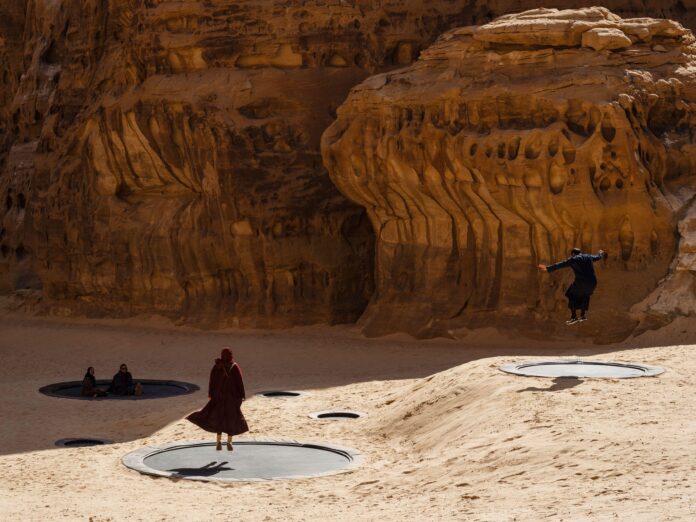Manal AlDowayan: Participatory (The Art Library), Mona Khazindar (ed), Rizzoli International Publications, 128pp, $60 (box set)
Manal AlDowayan, an established Saudi Arabian artist, worked for the oil company Saudi Aramco for ten years, where she joined the company’s art group and held exhibitions of her work. She later relocated to Dubai before moving to London to study at the Royal College of Art. “Her work throughout the years has formed into participatory acts that communicate personal histories to the world,” says a publisher’s statement. Works featured include Now You See Me, Now You Don’t, Al Ula (2020-21), an installation comprising trampolines and solar LED lights that was shown at the first edition of the Desert X contemporary art exhibition in AlUla, Saudi Arabia.

Not Vital’s Moon (2004)
Not Vital: Sculpture, Alma Zevi, Skira/Thames & Hudson, 468pp, €60 (hb)
The gallerist Alma Zevi examines the life and work of the Swiss sculptor and painter Not Vital, exploring how “folklore, nature and identity manifest in Vital’s output”, according to a publisher’s statement. The book features more than 450 sculptures and other works, along with archival material and interviews with the artist. “The publication is scholarly but also a personal account of Vital’s life and work, giving new insights into his techniques and ideas,” Zevi tells The Art Newspaper. Key works discussed include the 1981 sculpture Stone Eater and the 1990s series works comprising antlers that spell out the words “Fuck Off.”

Exaltation of the True Cross (detail from the Finding and Exaltation of the True Cross) (around 1603-05) by Adam Elsheimer
Natural Light: The Art of Adam Elsheimer and the Dawn of Modern Science, Julian Bell, Thames & Hudson, 256pp, £25 (hb)
Julian Bell reassesses the life and work of the little-known 16th-century German artist Adam Elsheimer, highlighting debates at the time around art, literature, science and what constituted the essence of “nature”. Bell writes: “I want to bring out not only the lyricism and humanity of his pictures, but the complexity of his thinking and the ways in which it bears on the debates about nature that were circulating in his era.”A publisher’s statement adds: “Focusing on some of Elsheimer’s most haunting compositions, Bell drives at the anxieties that underlie them—a puzzling over existential questions that still have relevance today.”

Richard Wright’s No Title (2018) commission for Tottenham Court Road station © Richard Wright; Photo: GG Archard, 2022
Richard Wright, Will Bradly and Martin Clark (contributors), Gagosian, 362pp, £120 (hb)
This monograph has an important function, recording numerous ephemeral works by the Turner-prizewinning artist Richard Wright that no longer exist, including installations at the Kunsthistorisches Museum in Vienna and the Volksbühne in Berlin. Wright usually works in situ and has likened his technique to the improvisations of a jazz musician. The monograph, which explores works made between 2010 and 2020, also focuses on permanent works including Wright’s geometric wall drawing at the Elizabeth Line station at Tottenham Court Road in London. “One of Wright’s few permanent pieces, it stretches across the concrete ceiling above the escalators, offering a subtly-shifting experience for ascending and descending travellers,” wrote The Art Newspaper’s Louisa Buck when it was unveiled.

Through the Ruins (Talks on Human Rights and the Arts 1), Fawz Kabra (ed), Center for Human Rights and the Arts, 194pp (pb)
This publication shines a light on art activism, presenting the inaugural forum of talks at the OSUN Center for Human Rights and the Arts at Bard College, New York, in 2021. Contributors include the UK-based art writing platform The White Pube and the Geneva-based NGO Border Forensics. The White Pube, the collaborative alter ego of Zarina Muhammad and Gabrielle de la Puente, said: “Institutions [in the UK] hold the power, and they tend to be made up of white middle class people who give out jobs and opportunities to other white middle class people. It is almost impossible to make a living in the arts if you are not white, middle class, and nondisabled, or if you are precarious or marginalised in any way.”

























